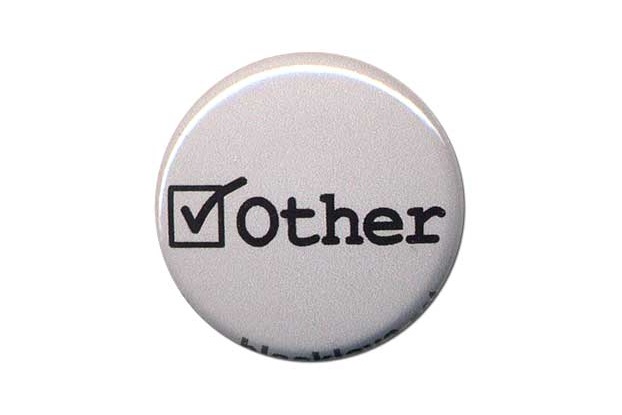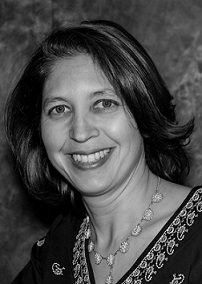
A few days ago I set up a booth with a stack of copies of my just-published book, Faint Promise of Rain, at an India Festival put on by a neighboring town. Several times, a South Asian person approached me and, upon learning of the topic and setting of the book — a family of temple dancers in 16th–century Rajasthan — asked rather earnestly: “But, are you Indian?” To which I gave a slightly amused smile, cocked my head in a partial waggle, and replied: “Half.” And each time, that was a satisfactory answer.
The public process of pushing a book out into the world, even more than the private process of writing it, has been an unexpected journey of self-discovery, and one in which one word stands out repeatedly: hybrid. It’s a term to which I didn’t give much thought prior to this past year, but now I realize how much it has always defined me, and how much it defines the creative lives of many of the artists, desi or non, that I encounter.
“Hybrid” is a tricky term. Hybrids are different, unusual. Hybrids can be beautiful, efficient, economical, sustainable (and sustaining). But there is a risk in embracing such a term: hybrids can be viewed as fake, or engineered, somehow unnatural. When something is part this and part that, there’s a tendency for people to conclude that it is fully nothing. In fact, quite the opposite can be true.
I grew up checking the “other” boxes on forms, much like Tanuja Desai Hidier wrote here in June. But mine was a different “other.” My father is Indian, from Calcutta. My mother, the daughter of a Jewish family from Brookline, Massachusetts. When I was a few months old, they moved the family to France, where I spent the first 18 years of my life. [pullquote]My status as a hybrid was conferred upon me: part Indian and part American by blood, part French by osmosis. [/pullquote]My status as a hybrid was conferred upon me: part Indian and part American by blood, part French by osmosis. In my French public school, I was American, because the French have an obsession with America. In the US, despite my perfect American accent, I was French, because that’s glamorous. Surely my name was actually Angélique? No one could figure out the Indian thing, even in India. My eyes are grey-green, my hair brown. Maybe I was Parsi? Some people still think I was named by hippie parents.
In retrospect, I realize that none of this really bothered me much. More than anything, I found people’s reactions amusing, and I reveled in my position in those three countries and cultures as both an insider and an outsider. Perhaps this helped me hone my writing skills. I often found myself describing situations to myself in fully formed sentences, even as I experienced them, so as to enhance my ability to describe them to others.
I traveled to the US for college, far preferring the liberal arts approach to the French system’s requirement to choose, at 17, a specific career track. I took classes in 18 different departments. I was unable to choose a single subject major and, at the eleventh hour, zeroed in as a default on a multi-disciplinary one, International Development Studies, for which, to my relief, requirements spanned many departments, including economics, anthropology, sociology, history, international relations, and several more. That this hybrid approach to my studies was acceptable saved me. However, I realized then that I ran the risk of putting together a mish-mash of work which, when looked at as a total, would amount to nothing that made sense. I needed to ensure that what I did had integrity and purpose, and so I set myself the challenge of submitting an (optional) honors thesis to pull it all together. In graduate school, I studied urban planning and took half my courses in civil engineering, then focused it all on a project to extend water infrastructure to the slums surrounding the city of Abidjan, Côte d’Ivoire.

By the time I emerged from graduate school, I knew I would never be the type to travel in a single, straight line. [pullquote align=”right”]I knew I would never be the type to travel in a single, straight line.[/pullquote]There would be zig zags, there would be crossovers. I freelanced as a writer and a project manager. I worked in education, in health care, in the non-profit world. I co-founded an organization dedicated to kathak dance and served as its executive director. I studied and taught kathak. And I did each of these with as much integrity and professionalism as I could. They all fed my passions.
And then, all of a sudden, I was writing a novel, the first of a planned set of four. Bits and pieces of my life came together — my visits to India, my study of kathak, my love of writing, my flexible schedule as a freelancer, my tendency to plan. In my professional worlds, especially with freelance clients, [pullquote]Bits and pieces of my life came together.[/pullquote]I tended to keep my seemingly irrelevant facets hidden. I didn’t want, for example, senior hospital executives with whom I was working to wonder with dismay why a novelist was serving as project manager for a grant-funded project in health care reform. But then an interesting thing started to happen: rather than to think less of my position or my work as a result of finding out the rest of the story, my colleagues were impressed. I’d proven myself to them with the work I did at the hospital, and then the fact that I was writing a novel enhanced, rather than detracted from, their respect.
It was in the process of seeking publication for my book that the power and the accompanying challenge of working in the middle zone really struck me. Editors term my writing “literary” while my agent is excited about its book club potential and my writing group sees opportunities for it in social media and the digital world. And [pullquote align=”right”]I realized two things: how much I want to exist in all those milieus, and how difficult it is to do so.[/pullquote]I realized two things: how much I want to exist in all those milieus, and how difficult it is to do so. While the world has become more and more accepting of blends, there is still usually some initial skepticism when people, or works, don’t fall into neat categories. But the fact is that when one is a hybrid, or creating hybrid work that is part This and part That, one needs to make very conscious choices regarding which parts of This one wants to adhere to, and which parts of That are most significant. One has to spend some time thinking deeply about what This is and what That is — explore roots, traditions, values — and how to represent them with integrity and clarity of purpose, so as to create something that is stronger, more powerful than the sum of its parts. And this, to me, while a significant challenge, is where the future is at, for all of us.
* * *
Anjali Mitter Duva is a writer who grew up in France and has family roots in Calcutta, India. After completing graduate studies at MIT and launching a career in urban planning, she found the call of storytelling too great to resist. A switch to freelance writing and project management allowed her more time for her own creative pursuits. Her first novel, Faint Promise of Rain, is published with She Writes Press. She is a co-founder of Chhandika, an organization that teaches and presents India’s classical storytelling kathak dance. Anjali lives near Boston with her husband and two daughters, and is at work on her second novel, set in 19th–century Lucknow.












